Complete Solutions to Multiple Correct Answer Type of chapter CENGAGE PHYSICS DPP of Class 12 book with complete answers and questions
| Class 12 | PHYSICS |
| Chapter | CENGAGE PHYSICS DPP |
| CENGAGE PHYSICS | Multiple Correct Answer Type |
| Number Of Questions | 54 |
| Academic Year | 2023-24 |
Which of the following ratios express pressure?
01:50View SolutionPorous rock through which groundwater can move is called an aquifer. The volume V of water that, in time T. moves through a cross section of area A of the aquifer is given by `(V)/(t)=(KAH)/(L)`, Where H is the vertical height of the aquifer over the horizontal distance L. This relation is called Darcy's law. The quantity K is the hydraulic conductivity of the aquifer. What are the SI units of K?
02:30View SolutionWhich of the following has value 1:
01:21View SolutionWhich of the following has value zero:
01:14View Solution

For a particle moving along straight line with constant acceleration (a), we define velocity of the particle with time as
`v=u+at`, (u`=`initial velocity)
Draw the velocity-time graph of the particle in following situations.
(i) Velocity is decresing with time (i.e., acceleration in negative)
(ii) Initial velocity is negative but acceleration is positive02:23View SolutionA particle is moving along x-direction with a constant acceleration a. The particle starts from `x=x_0` position with initial velocity u. We can define the position of the particle with time by the relation
`x=x_0+ut+(1)/(2)at^2`
plot the position of the particle in relation with time is following situations
(i) If initial position of the particle is on negativ x-axis, initial velocity is positive and acceleration is negative.
(ii) If initial position is positive, initial velocity is negative and acceleration is positive.02:57View Solutionwhich of the following four statements are correct?
02:44View SolutionA particle is moving on the x-axis. If initial velocity `ugt0`, and acceleration `alt0` and a is constant then number of possible calues of the time for which the particle is at distance `d` from its starting point may be:
04:16View SolutionFor a particle moving in straight line with increasing speed the sppropriate sign of acceleration a and velocity v can be:
02:05View SolutionA particle of mass m moves along a curve `y=x^2`. When particle has x-coordinate as `(1)/(2)` m and x-component of velocity as `4(m)/(s)`, then
03:23View SolutionThe velocity of a particle moving in the positive direction of x-axis veries as `v=10sqrtx`. Assuming that at `t=0`, particle was at `x=0`
01:58View SolutionA particle moves along x-axis such that its position veries with time as `x=50t-5t^2`. Select the correct alternative (s).
03:35View SolutionA stone is projected vertically upwards `y=0` second. The net displacement of stone is zero in time interval between `t=0` second to `t=T` seconds. Pick up the correct statement
06:03View SolutionA person, standing on the roof of a 40 m high tower, throws a ball vertically upwards with speed 10 m/s. Two seconds later, he throws another ball again in vertical direction (use `g=10(m)/(s^2)`). Both the balls hit the ground simultaneously.
05:28View SolutionA balloon starts rising from the ground with an acceleration of `1.25ms^-2`. After 8 seconds, a stone is released from the balloon. After releasing, the stone will:
05:03View SolutionA man in a lift ascending with an upward acceleration `a` throws a ball vertically upwards with a velocity `v` with respect to himself and catches it after `t_1` seconds. After wards when the lift is descending with the same acceleration `a` acting downwards the man again throws the ball vertically upwards with the same velocity with respect to him and catches it after `t_2` seconds?
06:18View Solution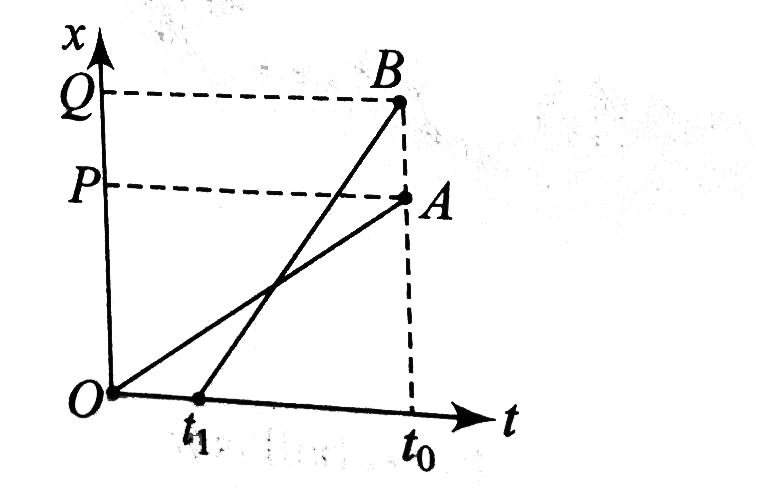
The position-time (x-t) graphs for two children A and B returning from their school O to their homes P and Q respectively along straight line path (taken as x-axis) are shown in figure. Choose the correct statement (s):02:28View Solution
A particle can travel point A to B from two different path 1 and 2, as shown, in same interval of time. Then which of the following is incorrect?03:48View SolutionAt the highest point of the path of a projectile, its
02:52View Solution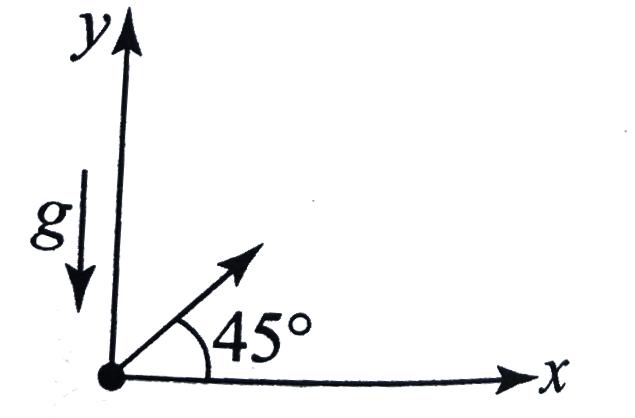
A stone is projected at an angle `45^@` with horizontal above horizontal x-axis as shown in figure (and y-axis is vertical). Four graphs representing the magnitude of horizontal `(v_x)` or magnitude of vertical `(v_y)` component of velocity of stone w.r.t. time t as shown. Then which of the following magnitude of velocity versus time graph best represents `v_x` versus t and `v_y` versus t respectively for the stone.02:08View SolutionA stone is projected from level ground with speed u and ann at angle `theta` with horizontal. Somehow the acceleration due to gravity (g) becomes double (that is 2g) immediately after the stone reaches the maximum height and remains same thereafter. Assume direction of acceleration due to gravity always vertically downwards.
Q. The total time of flight of particle is:08:15View SolutionA stone is projected from level ground with speed u and ann at angle `theta` with horizontal. Somehow the acceleration due to gravity (g) becomes double (that is 2g) immediately after the stone reaches the maximum height and remains same thereafter. Assume direction of acceleration due to gravity always vertically downwards.
Q. The horizontal range of particle is08:15View SolutionA stone is projected from level ground with speed u and ann at angle `theta` with horizontal. Somehow the acceleration due to gravity (g) becomes double (that is 2g) immediately after the stone reaches the maximum height and remains same thereafter. Assume direction of acceleration due to gravity always vertically downwards.
Q. The angle `phi` which the velocity vector of stone makes with horizontal just before hitting the ground is given by:08:15View Solution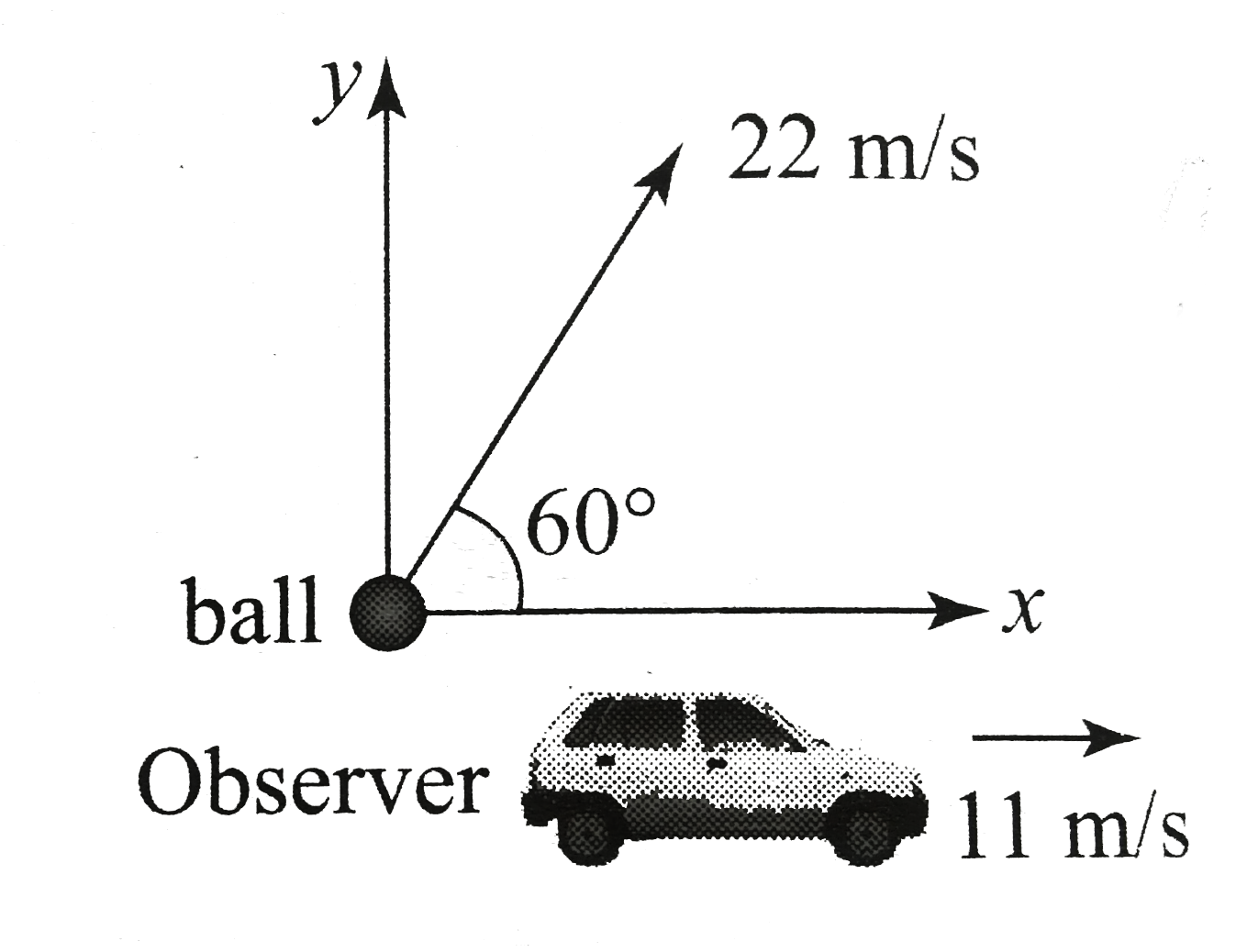
A football is kicked with a speed of `22(m)/(s)` at an angle of `60^@` to the positive x direction taken along horizontal. At that instant, an observer moves past the football in a car that moves with a constant speed of `11(m)/(s)` is the positive x direction. Take `+ve` y direction vertically upwards. `(g=10(m)/(s^2)`)03:45View SolutionA particle is projected from a horizontal floor with speed `10(m)/(s)` at an angle `30^@` with the floor and striking the floor after sometime. State which is correct.
07:22View Solution
Two balls are thrown from an inclined plane at angle of projection `alpha` with the plane one up the incline plane and other down the incline as shown in the figure. If `R_1` & `R_2` be their respective ranges, then:09:08View SolutionTwo boats A and B having same speed relative to river are moving in a river. Boat A moves normal to the river current as observed by an observer moving with velocity of river current. Boat B moves normal to the river as observed by the observer on the ground.
05:04View Solution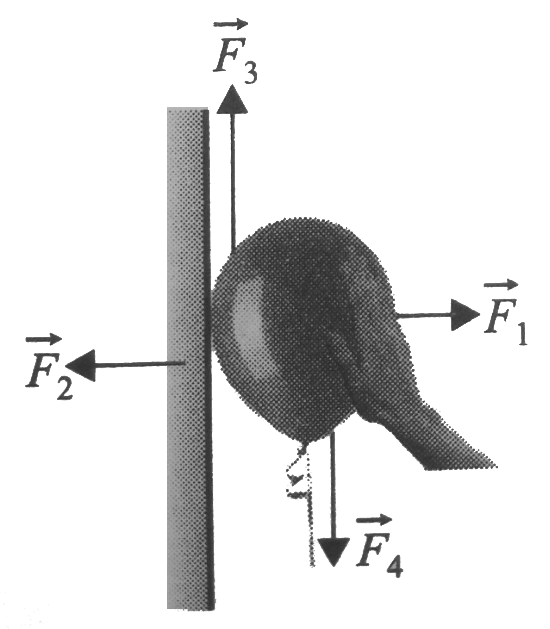
In the figure shown, a balloon is pressed against a wall. It is in equilibrium and maximum compressed state.
`vecF=` force of balloon on hand of man, `vecF_2=` force of balloon on wall,`vecF_3=` friction,`vecF_4=` weight of balloon. Which of the following statements are correct:01:53View Solution
Consider a cart being pulled by a horse with constant velocity. The horse exerts force `vecF_((C )/(h))` on the cart. (The subscript indicate the force on the cart due to horse.). The first subscript denotes the body on which force acts and second due to which it acts.
Choose the statements(s):03:02View Solution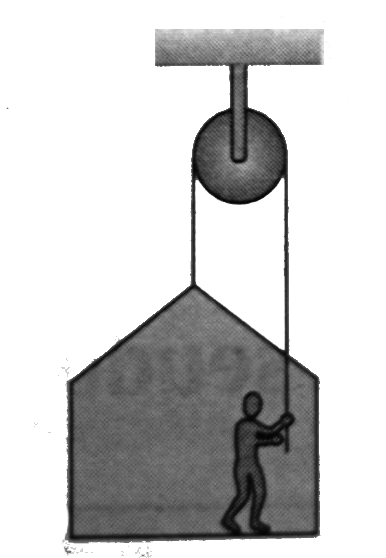
A painter is applying force himself to raise him and the box with an acceleration of `5(m)/(s^2)` by a massless rope and pulley arrangement as shown in figure. Mass of painter is 100 kg and that of box is 50 kg. If `g=10(m)/(s^2)`, then:05:21View Solution
A cylinder of mass M and radius R is resting on two corner edges A and B as shown in figure. The normal reaction at the edges A and B are: (Neglect friction)03:26View Solution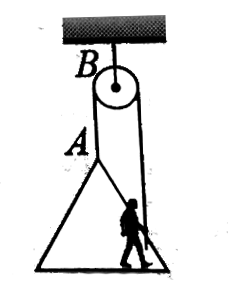
To paint the side of a building, painter normally hoists himself up by pulling on the rope A as in figure. The painter and plateform together weigh 200 N. The rope B can withstand 300 N. Then03:38View SolutionIn the figure shown , A and B are free of to move. All the surfaces are smooth. `(0 lt theta lt 90^(@))`
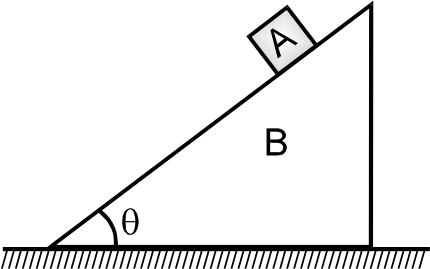 05:48View Solution
05:48View Solution
A smooth wedge of mass M is pushed with an acceleration `a=gtantheta` and a block of mass m is projected down the slant with a velocity v relative to the wedge.
Q. The time taken by the block to reach the ground is:06:21View Solution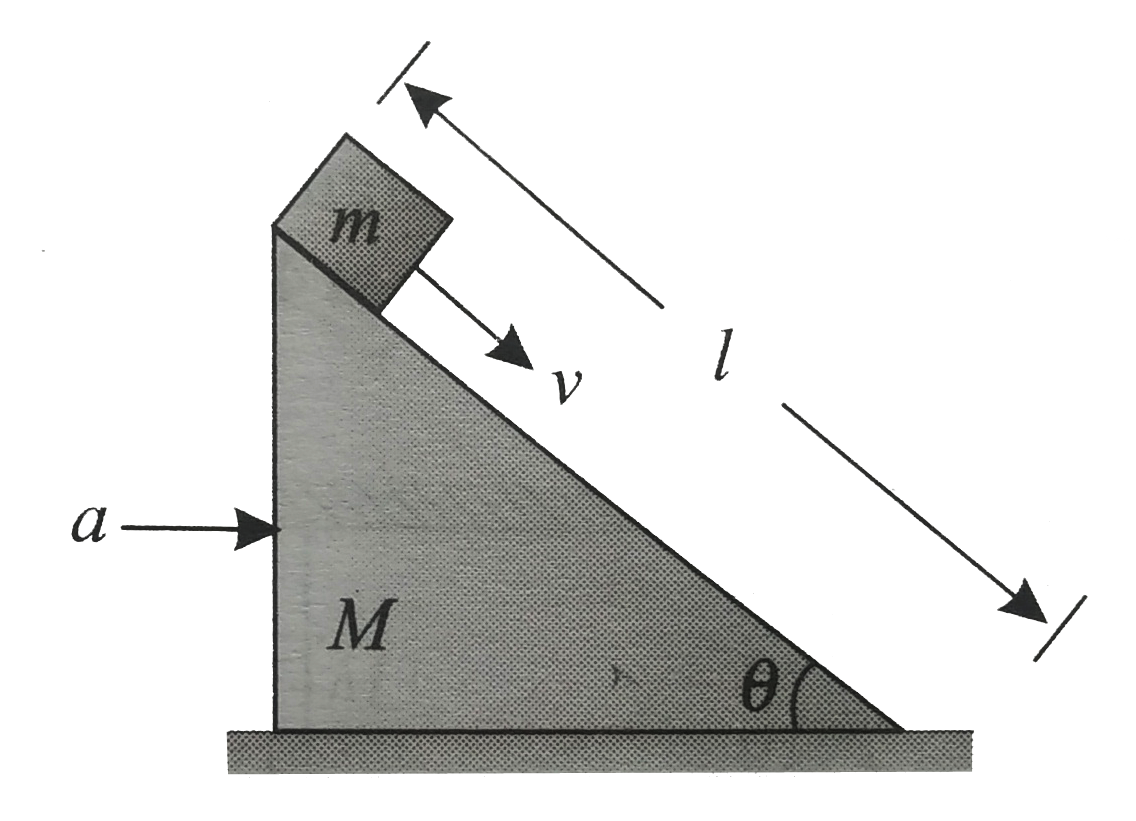
A smooth wedge of mass M is pushed with an acceleration `a=gtantheta` and a block of mass m is projected down the slant with a velocity v relative to the wedge.
Q. The normal reaction between wedge and block is:06:21View Solution
A smooth wedge of mass M is pushed with an acceleration `a=gtantheta` and a block of mass m is projected down the slant with a velocity v relative to the wedge.
`The horizontal force applied on the wedge is:06:21View Solution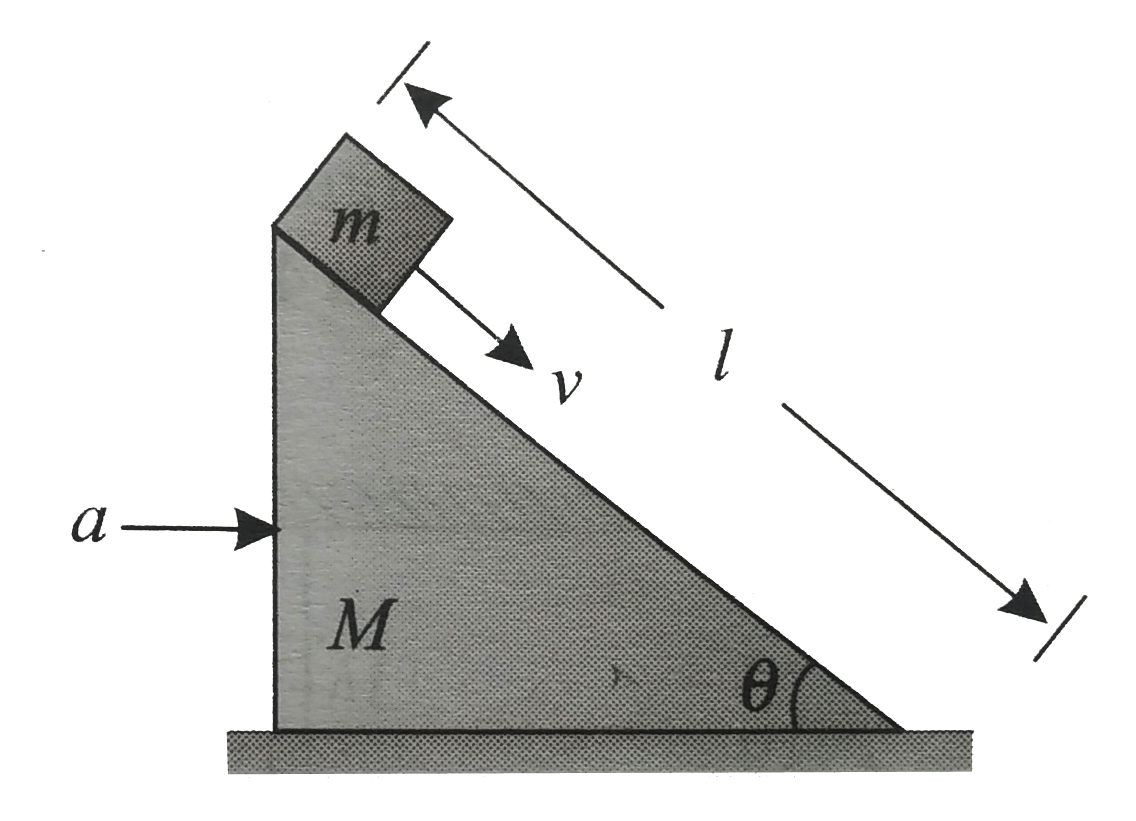
A smooth wedge of mass M is pushed with an acceleration `a=gtantheta` and a block of mass m is projected down the slant with a velocity v relative to the wedge.
Q. The normal reaction offered by ground to the wedge is:06:21View Solution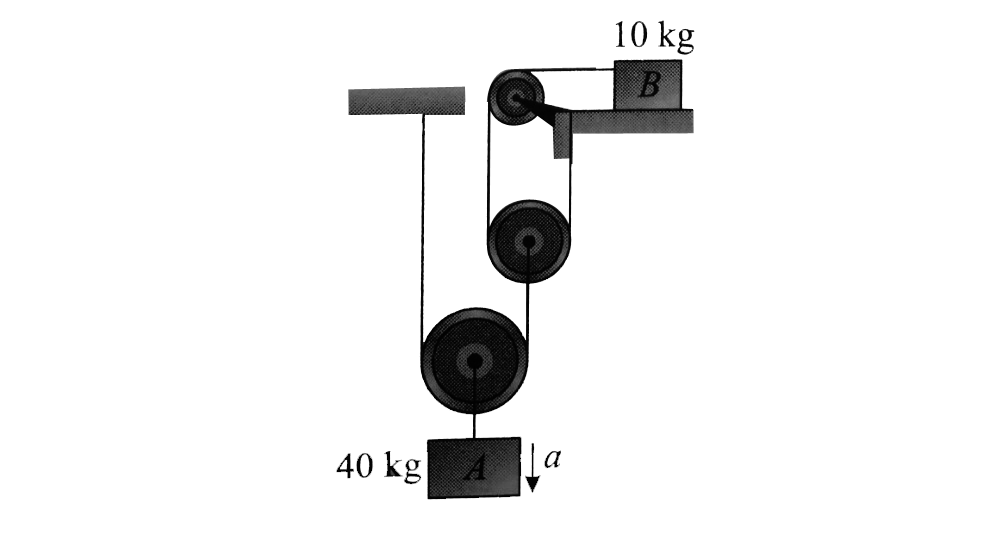
Figure shown two blocks A and B connected to an ideal pulley string system. In this system when bodies are released then:(neglect friction and take`g=10(m)/(s^2)`)03:09View SolutionTwo blocks A and B of equal mass m are connected through a massless string and arranged as shown in figure. The wedge is fixed on horizontal surface. Friction is absent everwhere. When the system is released from rest.
 02:57View Solution
02:57View Solution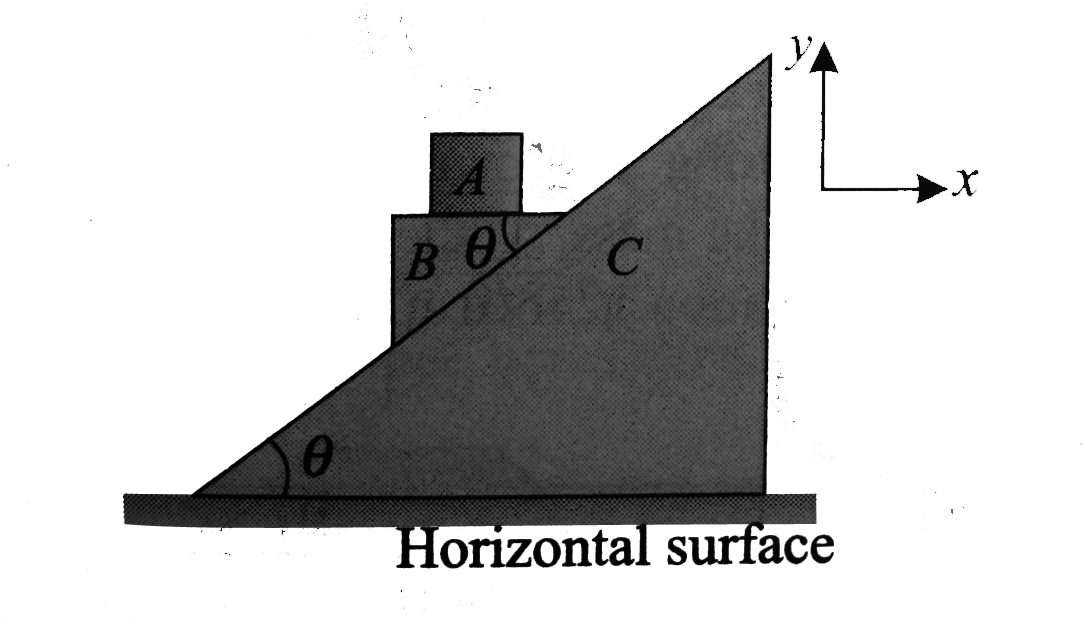
In the figure shown all the surface are smooth. All the blocks A,B and C are movable x-axis is horizontal and y-axis vertical as shown. Just after the system is relased from the position as shown.07:02View Solution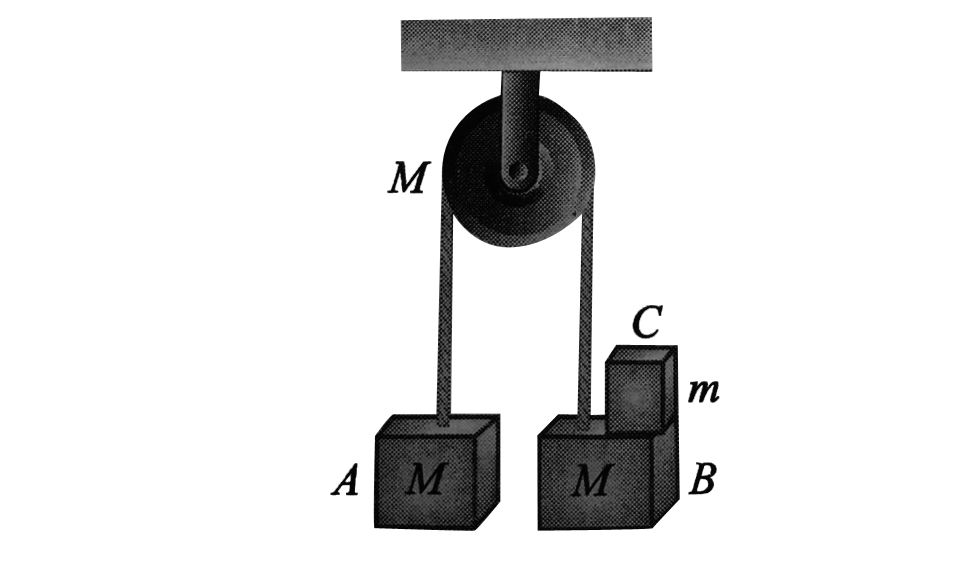
For the following system shown assume that pulley is frictionless, string is massless (m remains on M),
Q. The acceleration of the block A is06:55View Solution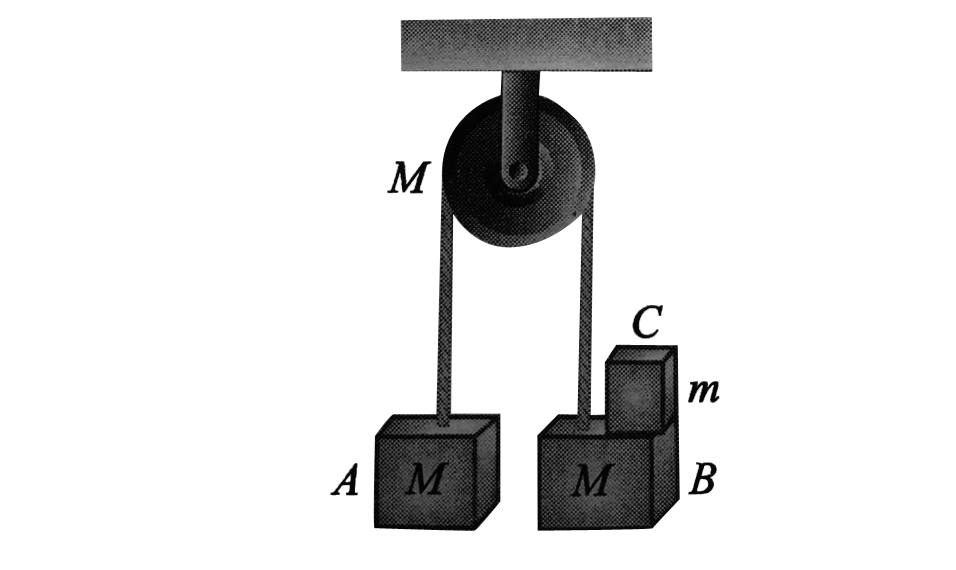
For the following system shown assume that pulley is frictionless, string is massless (m remains on M),
Q. Normal reaction on m is (force on C due to B)06:55View Solution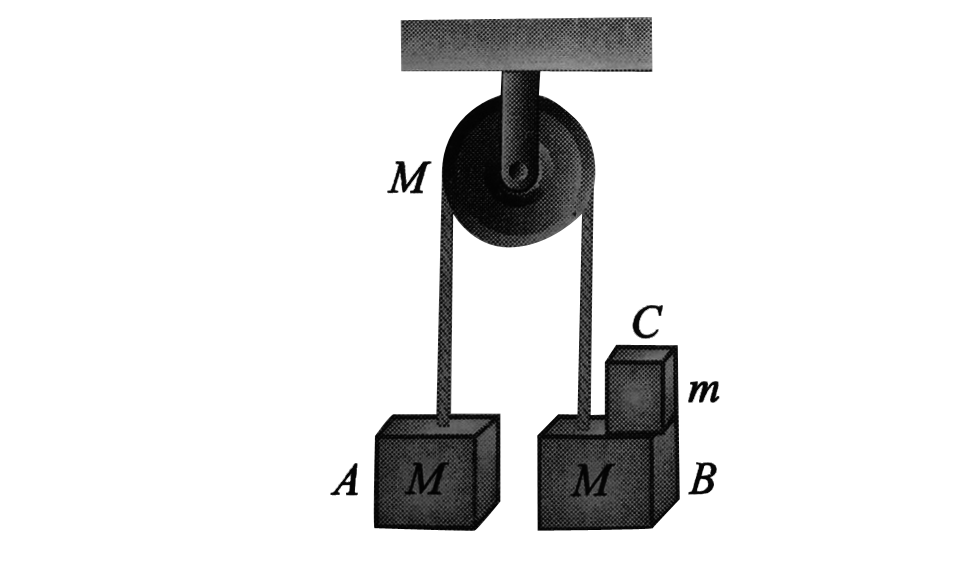
For the following system shown assume that pulley is frictionless, string is massless (m remains on M),
Q. The force on the ceiling is06:55View Solution
Two blocks of mass M and m, are used to compress two different massless spring as shown. The left spring is compressed by 3 cm, while the right spring is compressed by an unknown amount.. The system is at rest, and all surfaces fixed and smooth. Which of the following statements are true?03:44View SolutionWhen a bicycle is in motio, the force of friction exerted by the ground on the two wheels is such that it acts
01:20View Solution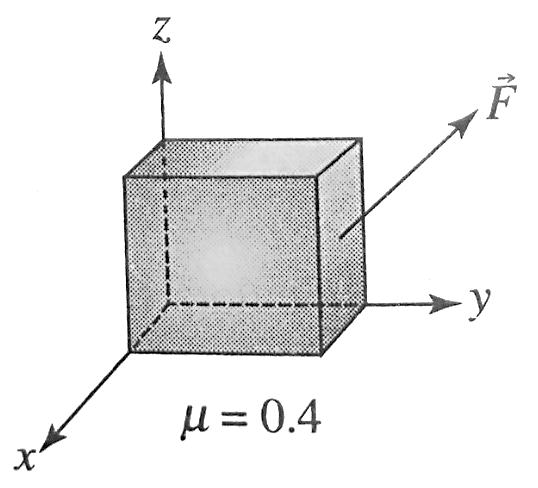
A solid cube of mass 5 kg is placed on a rough horizontal surface, in xy-plane as shown. The friction coefficient between the surface and the cube is 0.4. An external force `vecF=6hati+8hatj+20hatkN` is applied on the cube. (use `g=10(m)/(s^2)`)06:16View SolutionTwo blocks of masses `m_(1)` and `m_(2)` are connected by a string of negligible mass which pass over a frictionless pulley fixed on the top of an inclined plane as shown in figure. The coefficient of friction between `m_(1)` and plane is `mu`.
 05:36View Solution
05:36View Solution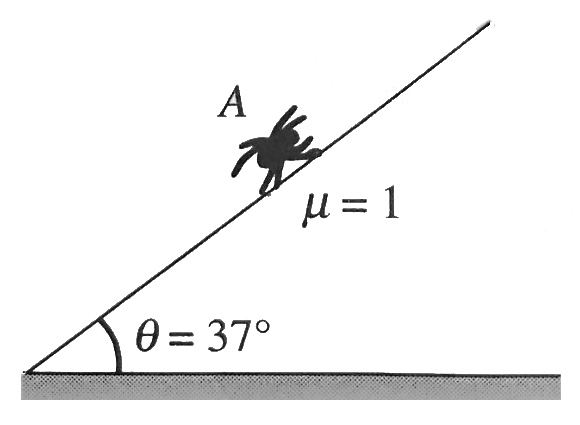
An insect of mass m, starts moving on a rough inclined surface from point A. As the surface is vert sticky, the corfficient of fricion between the insect and the incline is `mu=1`. Assume that it can move in any direction, up the incline or down the incline then04:22View SolutionThe given plot shows the variation of U, the potential energy of interaction between two particles with the distance separating them r,
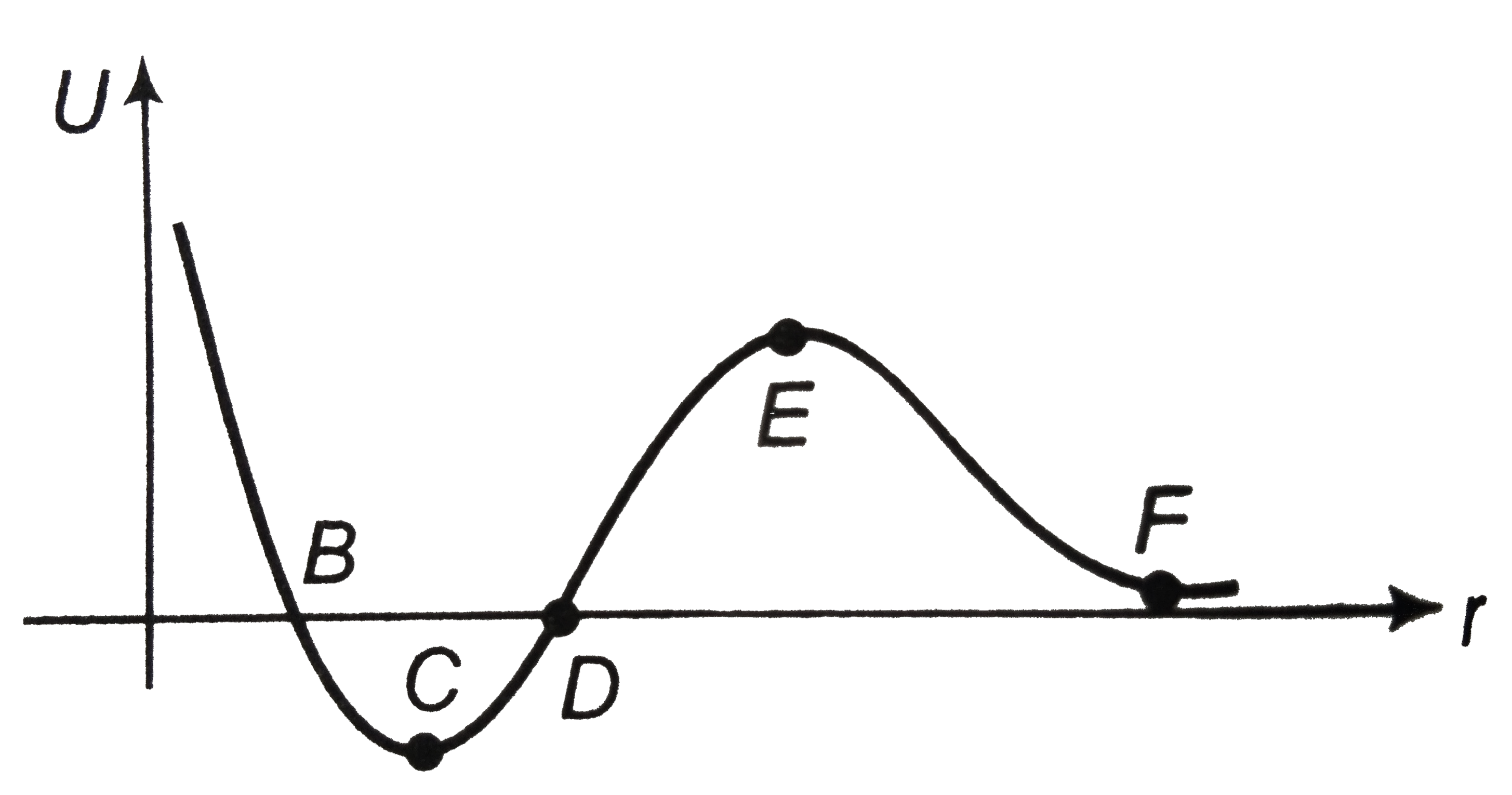 04:49View Solution
04:49View Solution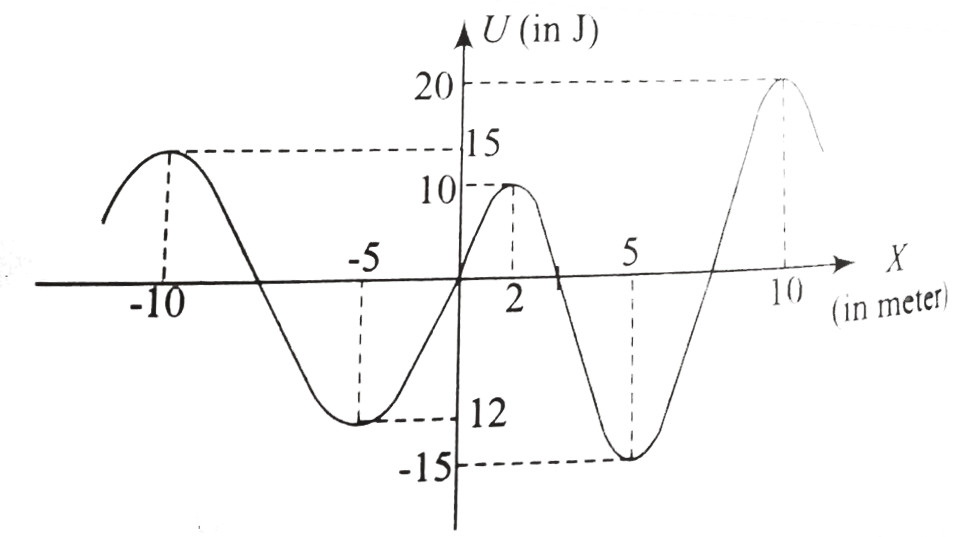
In the figure the variation of potential energy of a particle of mass `m=2kg` is represented w.r.t. its x-coordinate. The particle moves under the effect of this conservative force along the x-axis. Which of the following statements are correct about the particle:04:25View SolutionOne of the forces acting on a particle is conservative then which of the following statement (s) are true about this conservative force
01:38View SolutionA particle of maas m is attched to a light string of length l, the other end of which is fixed. Initially the string is kept horizontal and the particle is given an upwrd velocity v. The particle is just able to complete a circle
03:44View Solution
As shown in figure BEF is a fixed vertical circular tube. A block of mass m starts moving in the tube at point B with velocity V towards E. It is just able to complete the vertical circle. Then.05:53View Solution
A small block of mass m is pushed on a smooth track from position A with a velocity `(2)/(sqrt(5))` times the minimum velocity required to reach point D. The block will leave the contact with track at the point where normal force between them becomes zero.
Q. At what angle `theta` with horizontal does the block gets separated from the track?10:17View Solution
Multiple Correct Answer Type questions and complete solutions for chapter CENGAGE PHYSICS DPP of CENGAGE PHYSICS (HINGLISH) of Class 12
